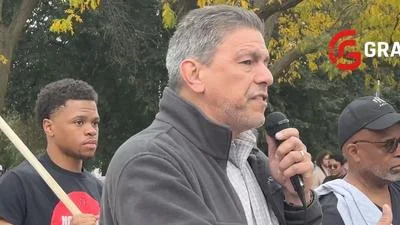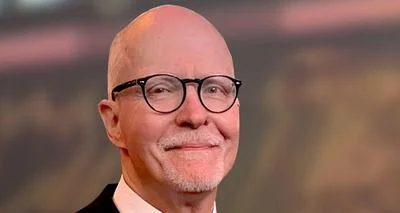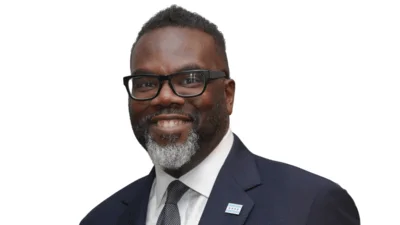Brandon Johnson Mayor | Chicago Contrarian
Brandon Johnson Mayor | Chicago Contrarian
Chicago’s long-standing pension crisis has reached a point where some analysts believe bankruptcy may be the city’s only remaining option. More than a decade ago, a letter published in the Sun-Times warned of the severity of Chicago’s pension shortfall. The letter stated: “We are writing today to let you know that the pension crisis has grown so severe that it is now, unfixable,” and was co-signed by Miles White, chairman of the Commercial Club; Jim Farrell, chairman of the Civic Committee; and Ty Fahner, president of both organizations.
At that time, White led Abbott Labs, Farrell had recently retired from Illinois Tool Works, and Fahner was a partner at Mayer Brown with experience in tax and bankruptcy matters.
In a recent article for Chicago Contrarian, George Shay wrote: “First comes moral bankruptcy. Then comes fiscal bankruptcy.” Shay argues that Chicago has been facing both for an extended period.
The total pension debt is estimated to exceed $35 billion based on 2024 actuarial data from city pension funds. However, this figure may understate the true liability due to optimistic assumptions about investment returns and life expectancy for retirees. Analysts such as Mark Glennon at Wirepoints have raised concerns about these calculations.
A new state law addressing Chicago’s Tier 2 pension system could add another $11-15 billion to the overall debt. This increase does not account for other municipal obligations like bond debt or liabilities associated with entities such as the park district or public schools.
Earlier this year, Illinois Policy reported that each Chicago taxpayer faces more than $40,000 in city debt alone. When county and state obligations are included, this number rises above $80,000 per taxpayer (https://www.illinoispolicy.org/reports/chicagos-taxpayer-burden-hits-record-high/).
Possible solutions identified include austerity measures, raising taxes, economic growth, inflationary strategies (which are not feasible locally), or filing for bankruptcy protection. Political leaders have shown little interest in spending cuts or imposing new taxes. Meanwhile, ongoing crime concerns hinder population growth and business investment.
The prospect of external assistance through a bailout is considered unlikely due to financial constraints at both state and federal levels.
If financial collapse occurs or if bankruptcy proceedings begin, those most likely to bear the consequences are middle-class residents, city workers—including police officers and teachers—and potentially bondholders. Wealthier individuals may leave the city while lower-income residents could face reduced services.
A previous piece for Contrarian suggested that mayoral candidates should openly advocate for organized bankruptcy as a way to manage an inevitable financial restructuring: "Consider a mayoral candidate whose sole position is that the city needs to be placed into 'organized bankruptcy.' ... It’s the only thing the candidate talks about."
Recent statements from Mayor Brandon Johnson acknowledged that without significant tax increases Chicago's finances have reached a "point of no return." After negotiating with unions and borrowing additional funds—such as an $800 million loan—the situation remains dire.
The consensus among several observers is that decisive action is overdue: "Here’s the thing about bankruptcy: The sooner you file the less painful it is. Chicago should have filed over a decade ago when the three wise men foretold of its coming. It would have been much less painful then."






 Alerts Sign-up
Alerts Sign-up